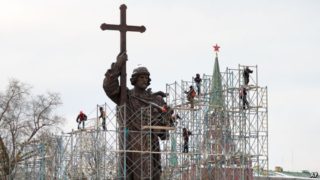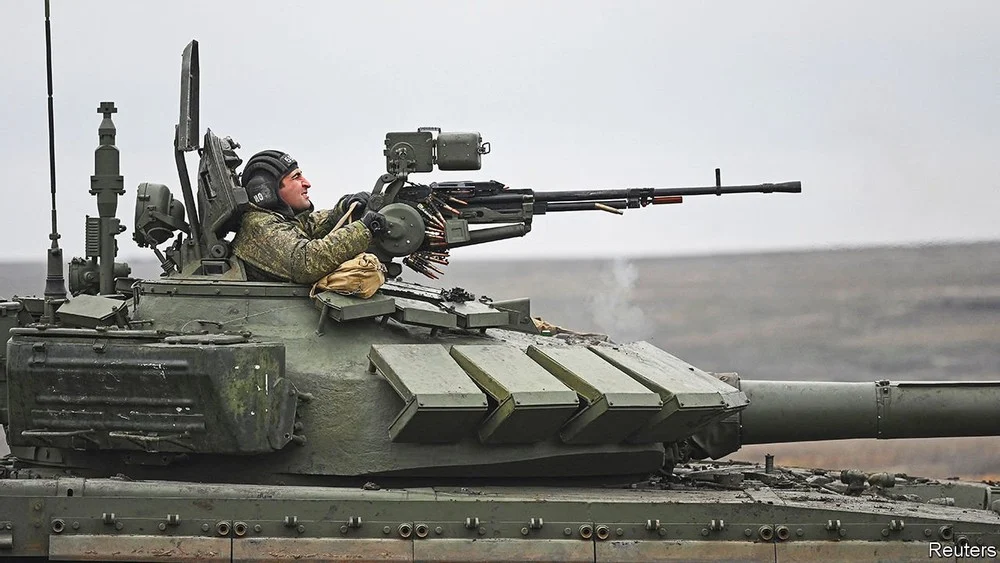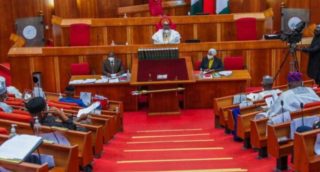MOSCOW — VLADIMIR PUTIN has a new neighbor: a 16-metre-tall bronze monument to Vladimir the Great, a tenth-century Slav prince. The statue stands just outside the Kremlin’s red walls. “In Soviet times it would have been Lenin,” says the sculptor, Salavat Shcherbakov.
The monument’s backers claim it commemorates the thousand-year anniversary of Vladimir’s death in 2015, but the political subtext is clear. The proto-state which Vladimir ruled was based in Kiev (it is known as Kievan Rus), and Ukraine sees him as its founding father. His face adorns Ukraine’s hryvnia note, and another monument to him already towers over the Dnieper river, where he baptised his people into the Orthodox faith. (He supposedly first rejected Judaism, Catholicism and Islam, telling Muslim envoys who demanded abstinence that “drinking is the joy of the Rus.”) Russia’s leaders, in turn, see the prince as the progenitor of modern Russia. “He’s our prince,” says Mr Shcherbakov.
Critics call the monument a crude gesture of Russian dominance. “It’s plain for all to see that Prince Vladimir is actually President Vladimir,” wrote Ekaterina Schulmann, a political scientist, when the plans were made public. Historians, too, question the logic. “When Vladimir was alive, Moscow did not exist,” notes Igor Danilevsky, an expert on ancient Rus. The prince, who married the sister of the Byzantine Emperor Basil II and was baptised in Crimea, died in the early eleventh century. His domain split into warring fiefs that eventually gave rise to Russia, Belarus and Ukraine.
In March 2014 Mr Putin invoked the prince’s legacy to justify the annexation of Crimea. “Suddenly people were interested in ancient Rus,” says Mr Danilevsky. Soon afterwards, the Russian Military-Historic Society (RVIO), a Tsarist-era body revived in 2012, announced plans for the monument. The design-selection committee was headed by Bishop Tikhon, a clergyman believed to be Mr Putin’s dukhovnik, or spiritual adviser.
Russia has been on a monument-building spree lately. Last month the city of Oryol unveiled a statue of Ivan the Terrible. Mr Shcherbakov is working on a likeness of Mikhail Kalashnikov, inventor of the famous rifle. In the current Russian political model, says Evgeniy Asse, a prominent architect, “the past is the main source of greatness.”
By The Economist





